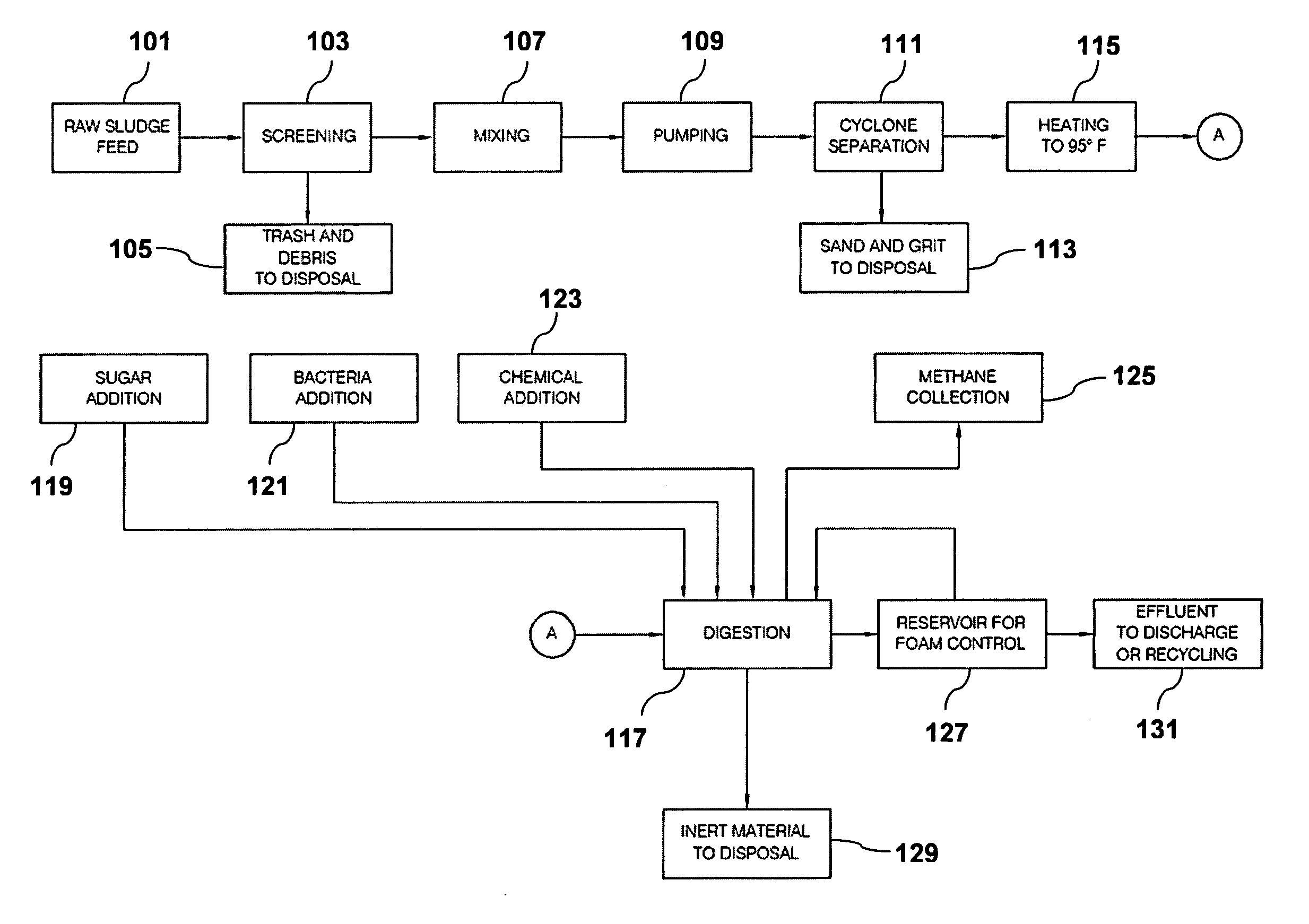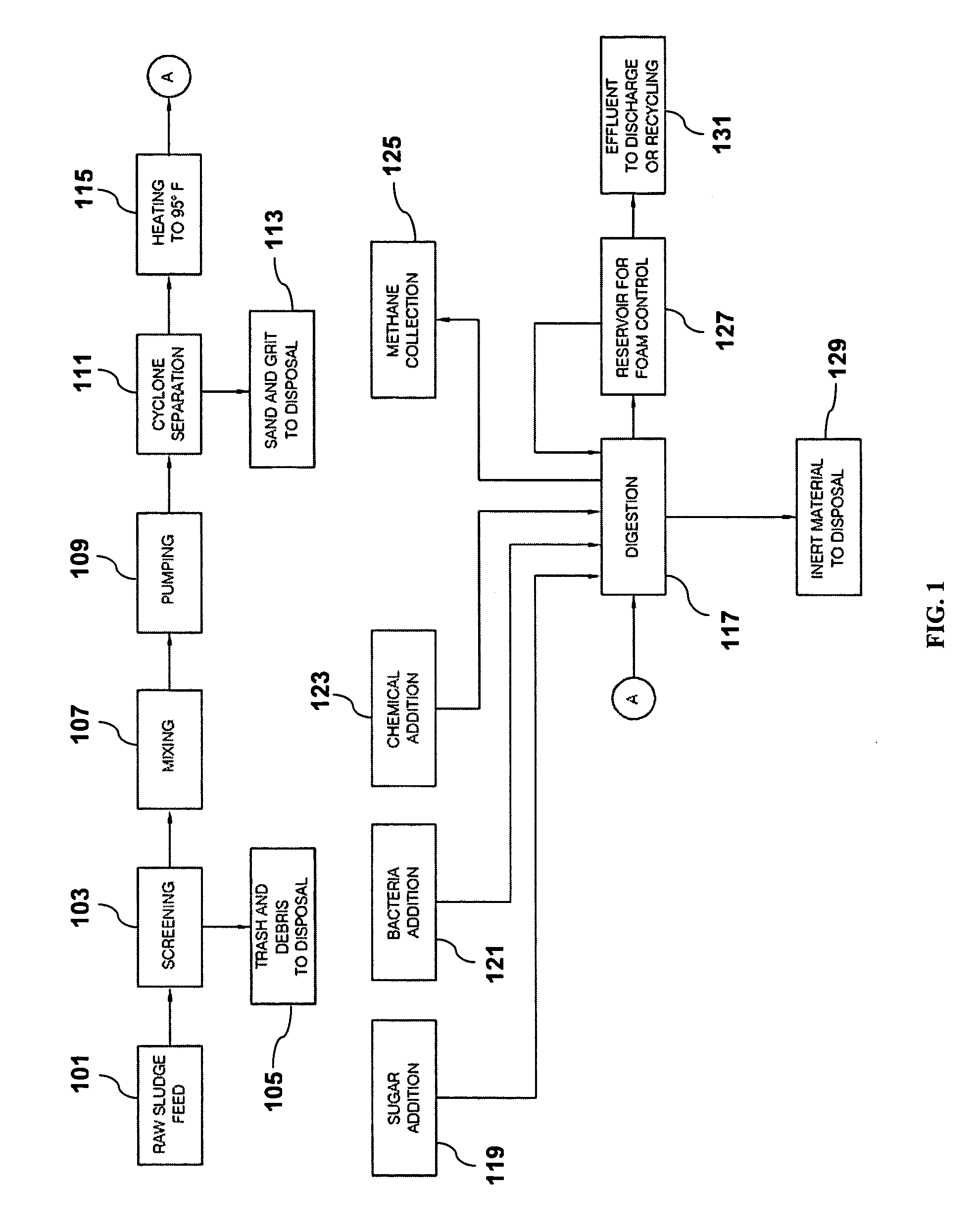Digesters
a technology of digesters and complex molecules, applied in the field of digesters, can solve the problems of long residence time typically required to digest organic waste, limited use of digesting for municipal or industrial waste, and complex molecules hydrolysis rate limitation, etc., and achieve the effect of speeding up the start-up or maintenan
- Summary
- Abstract
- Description
- Claims
- Application Information
AI Technical Summary
Problems solved by technology
Method used
Image
Examples
first embodiment
[0081] In a four reaction chambered anaerobic digester in accordance with the present invention, the multichambered digester provides a series of environments that select for anaerobic microorganisms that efficiently digest wastewater sludge. Under most operating conditions, no microorganisms will have to be added above those naturally found in the sludge. However if organic waste is from an industrial source, such as a poultry processing plant, a mixed population of aerobic or anaerobic microorganisms may need to be added initially.
second embodiment
[0082] The organic waste is supplemented with nutrients, examples of which are sugar and trace elements, from a nutrient tank, which is in fluid connection with the waste influent that is in fluid connection with one or more reaction chambers of the digester. In a multichambered anaerobic digester, the multichambered digester provides a series of environments that select anaerobic microorganisms that efficiently digest wastewater sludges. The organic waste flows into a collecting tank. A fraction of the volume contained in the collecting tank is continuously pumped through a controllable temperature control device that controls the temperature of the organic waste, one example of which is a heat exchanger. The organic waste, now at a controllable temperature, is supplemented with nutrients, one example of which is sugar, from a nutrient tank, which is in fluid connection with the waste influent that is in fluid connection with one or more reaction chambers of the digester. The organ...
third embodiment
[0083] In a multichambered anaerobic digester, the multichambered digester provides a series of environments that select for anaerobic microorganisms that efficiently digest wastewater sludges. The organic waste influent is collected in a holding tank. The solid concentration may be adjusted in this chamber. The organic waste after solid concentration adjustment is in fluid connection with a collection tank. A fraction of the volume contained in the collection tank is continuously pumped through a device or devices for removing inorganic solids, such as a rotating drum screen or a centrifugal separator or cyclone, which are positioned upstream of the first reaction chamber. A fraction of the volume contained in the collection tank is continuously pumped through a controllable temperature control device that controls the temperature of the organic waste, one example of which is a heat exchanger. The organic waste, now at a controllable temperature, is supplemented with nutrients, or ...
PUM
| Property | Measurement | Unit |
|---|---|---|
| width | aaaaa | aaaaa |
| residence time | aaaaa | aaaaa |
| residence time | aaaaa | aaaaa |
Abstract
Description
Claims
Application Information
 Login to View More
Login to View More - R&D
- Intellectual Property
- Life Sciences
- Materials
- Tech Scout
- Unparalleled Data Quality
- Higher Quality Content
- 60% Fewer Hallucinations
Browse by: Latest US Patents, China's latest patents, Technical Efficacy Thesaurus, Application Domain, Technology Topic, Popular Technical Reports.
© 2025 PatSnap. All rights reserved.Legal|Privacy policy|Modern Slavery Act Transparency Statement|Sitemap|About US| Contact US: help@patsnap.com



